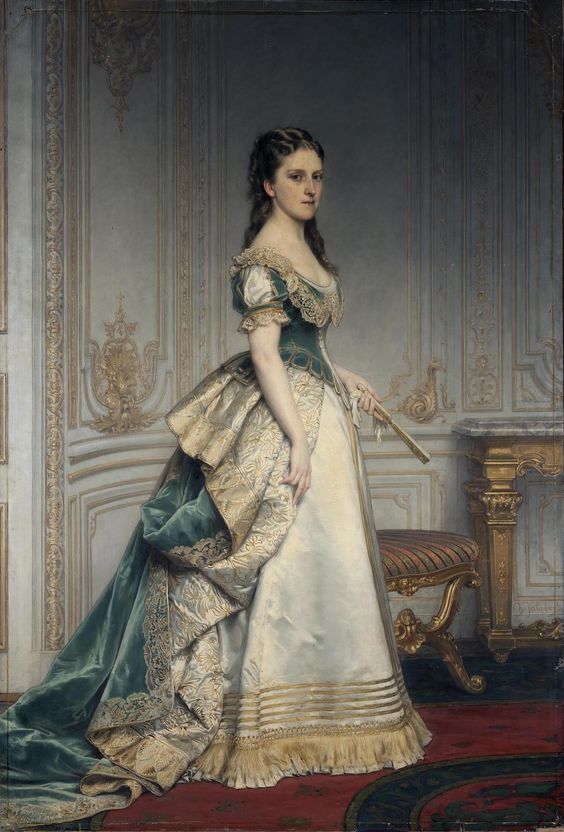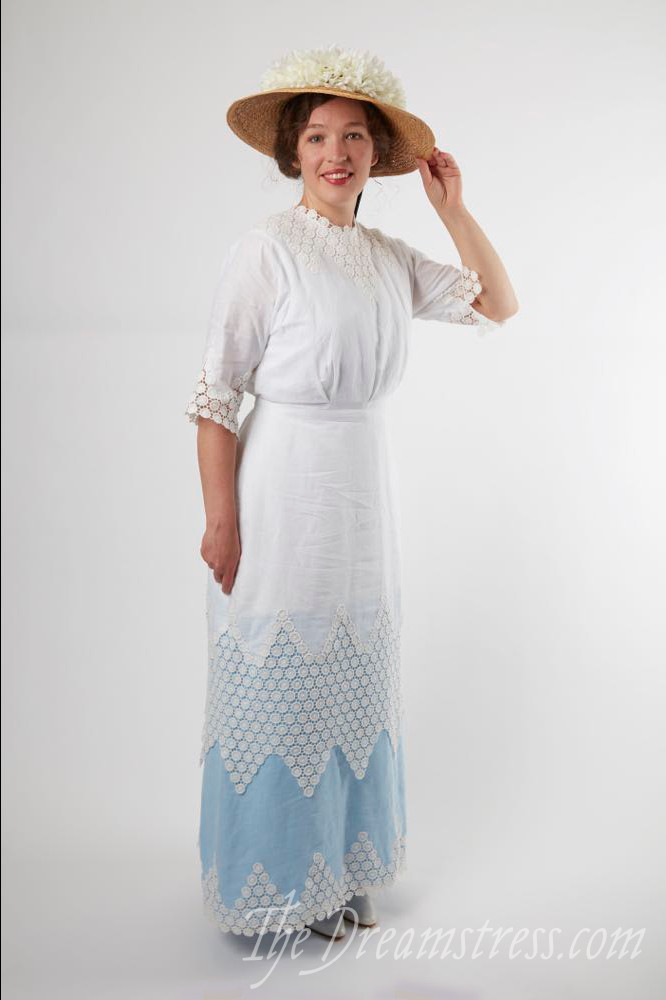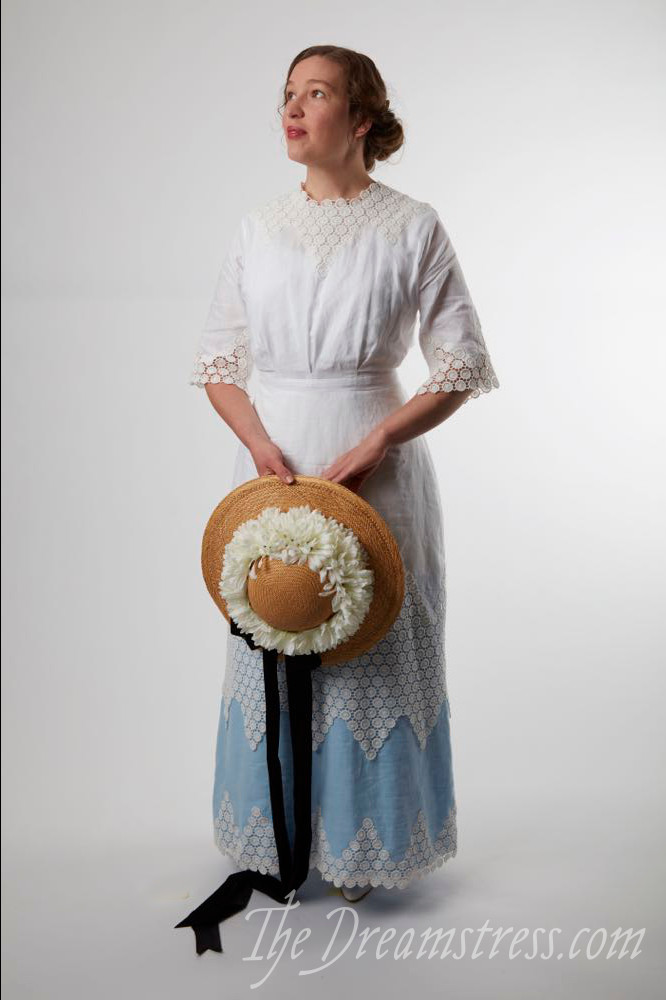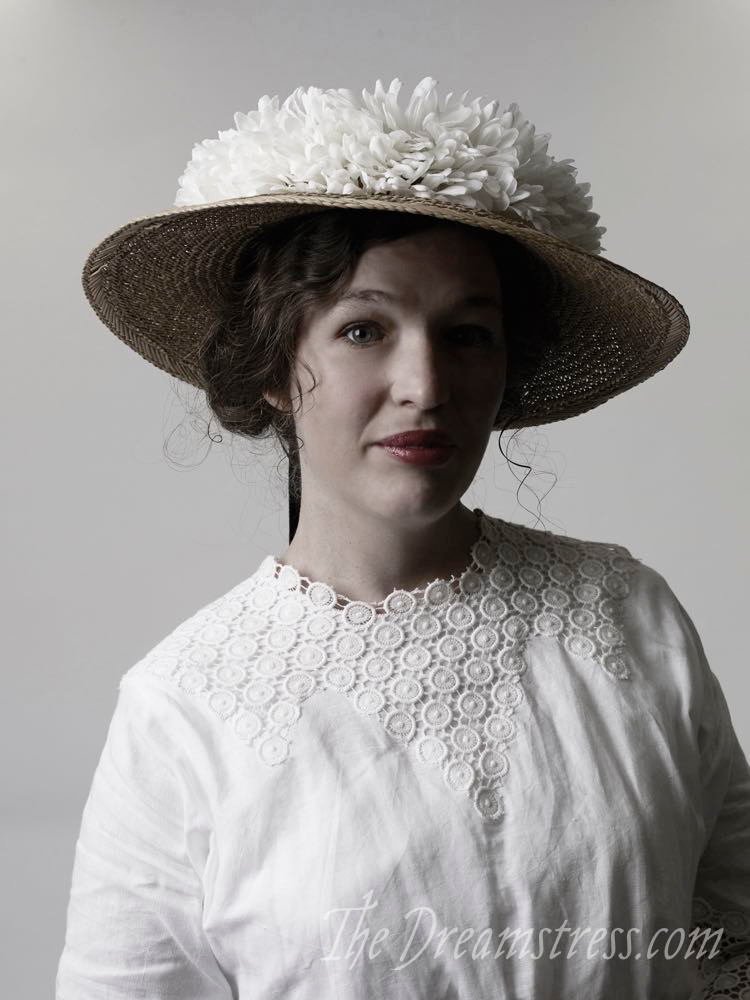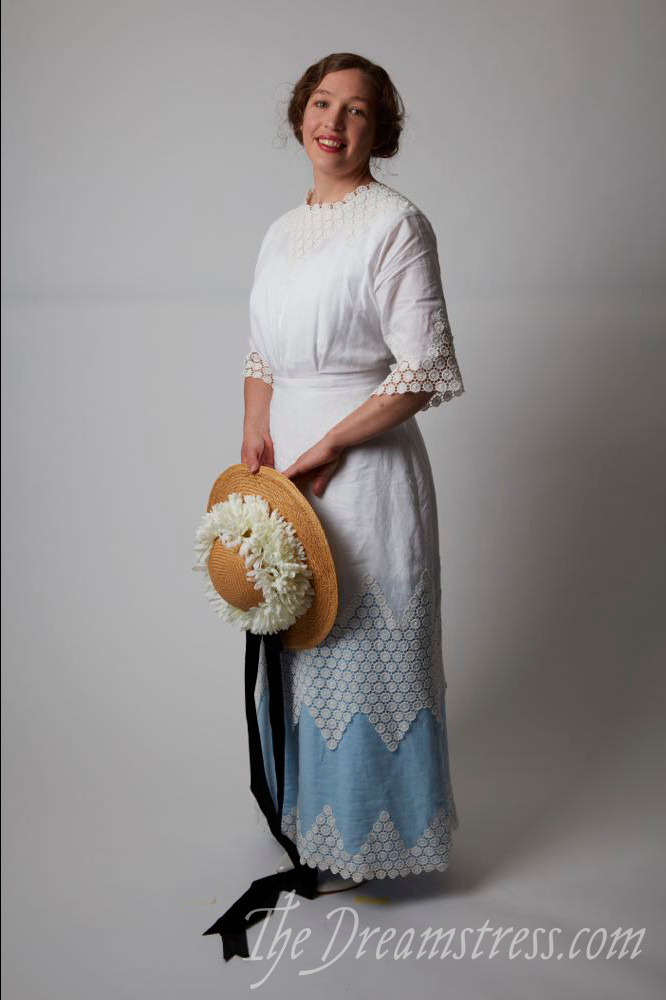I never thought I’d see the day when a yellow 1820s frock would beat a blue 1910s one in rate the dress ratings, but last week’s historical+classical+paisley number far eclipsed the blue grecian from the week before, with a score of 9.1 out of 10 to the blue’s 8.7 out of 10 – and those last few decimal points to break the 9 point barrier are the hardest to earn!
This week we’re borrowing the two elements that lost the most points for last week’s frock: the sleeves and hem ruffle, and seeing if they can win the day in a totally different frock.
This early 1870s portrait shows Russian heiress Nadezhda Polovtseva in a luxurious evening dress (probably for a court occasion) with definite elements of historicism. Her sleeves, like those of last week’s dress, have a Renaissance inspired ‘slashed’ effect, and her tabbed bodice looks back to the 17th and 18th centuries. Her bustling and folding back of her train is also a nod to 17th and 18th century mantua and court trains, but also does an excellent job of showing off the elaborate lining of her train.
Nadezhda Polovtseva was the adopted/foster daughter of Russian banker and arts patron Alexander von Stieglitz, Baron Stieglitz (and, according to popular rumour, the illegitimate daughter of Grand Duke Michael, which would make her the great-grandaughter of Catherine the Great).
The 18 year old Nadezhda married Alexander Polovstev, a mid-level Russian noble, making him very rich, and suddenly very in favour with royal family. Nadezhda’s connections (*cough* her uncle Nicholas I) resulted in Polovstev rising in political power. He become Russian Secretary of State in 1873 – right about the time this portrait was painted.
Both Polovstev and Nadezhda were cultural patrons in their own right. Polovstev was very influential in the founding of the Russian Historical Society. Baron Stieglitz had founded the Stieglitz Museum of Applied Arts and Central School of Industrial Arts in St Petersburg, and Polovstev and Nadezhda did much to add to the museums collections, and support the school.
As a patron of the arts, Nadezhda had numerous portraits of herself painted by any notable artist who visited Russia. This particular work may have commemorated her husband’s glittering new position, or may simply have taken advantage of access to French artist Jalabert’s proximity. Based on other portraits of Nadezhda, the facial likeness is quite accurate, but there is something about the connection between face and body that makes me suspect a body model stood in for the rest – or perhaps Jalabert was having a bad day!
However, we’re not here to rate Jalabert’s painting, but to consider Nadezhda’s outfit. What do you think?
Rate the Dress on a Scale of 1 to 10



